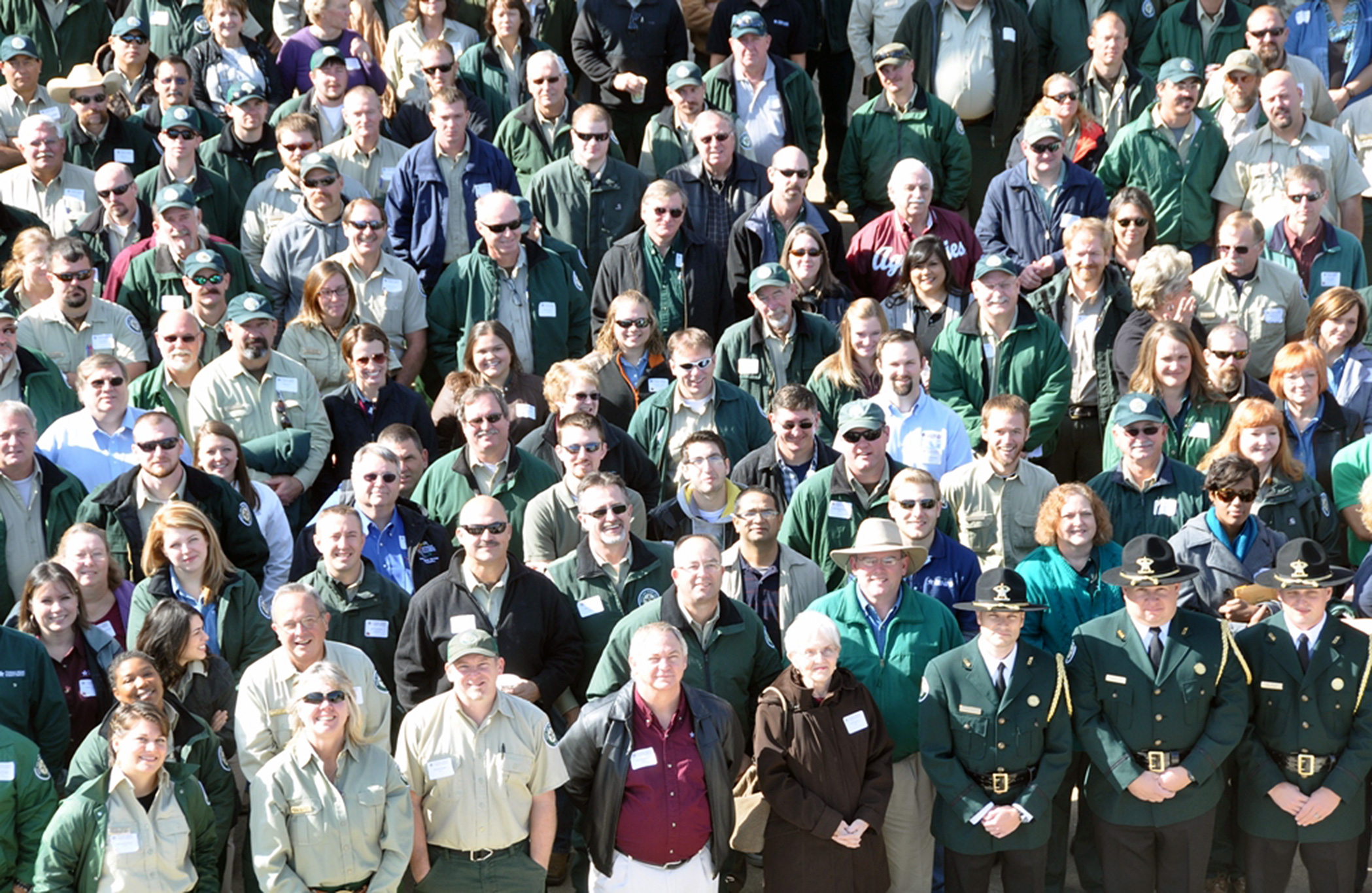

Fire detection efficiency improved in the 1920s with the use of fire lookouts. Initially, these consisted of tall, spike-laddered trees, some with wooden platforms.
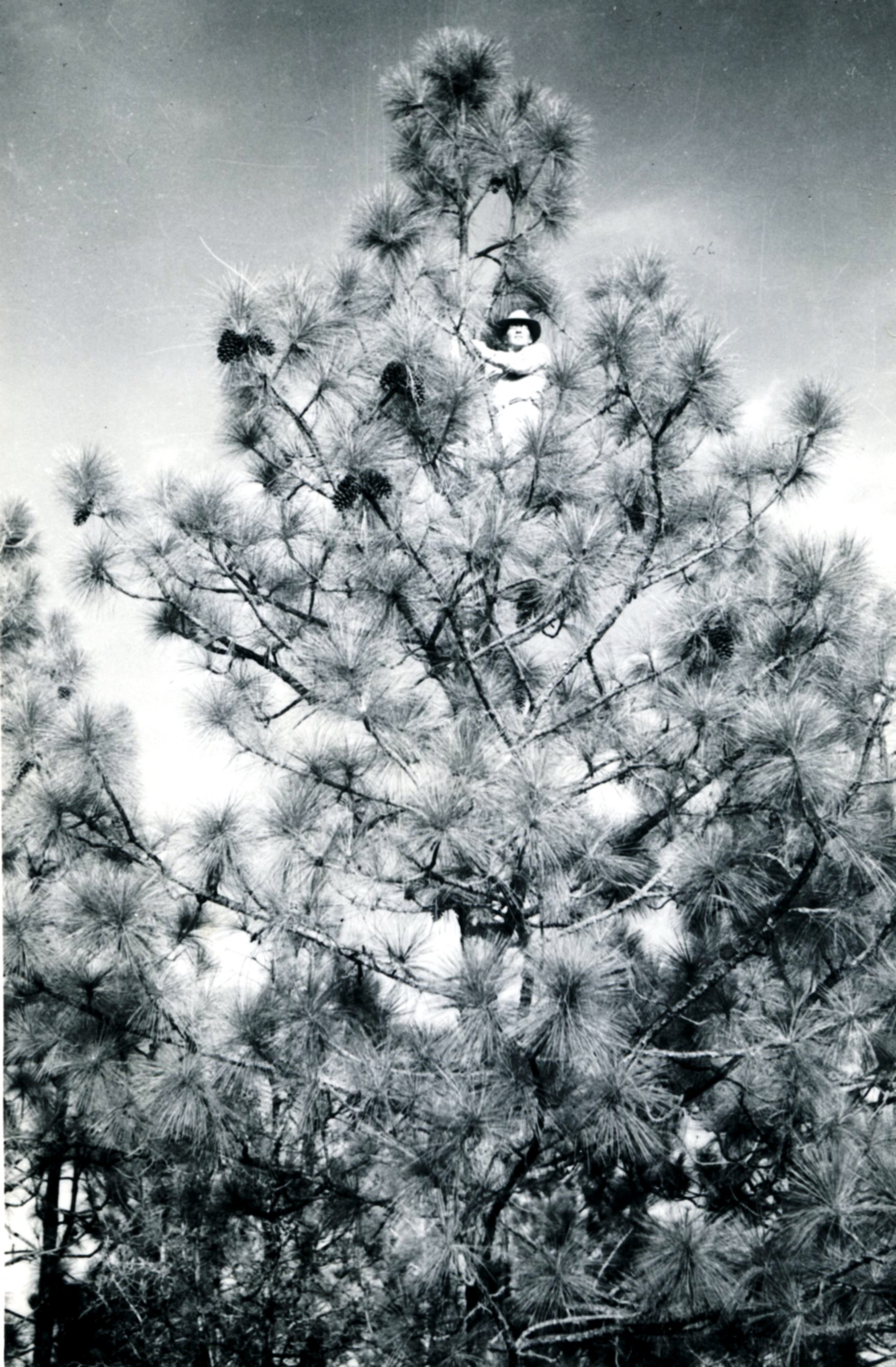
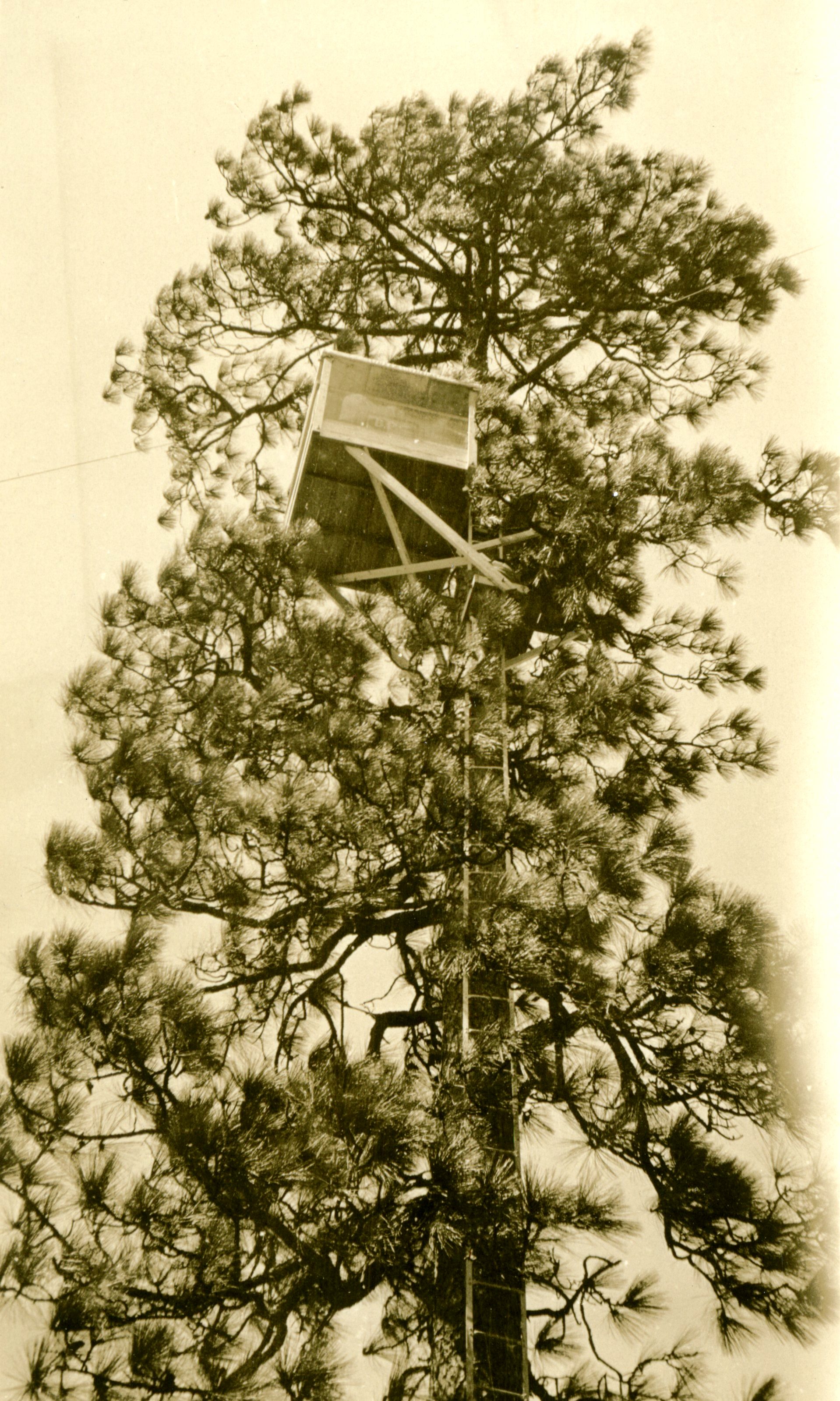
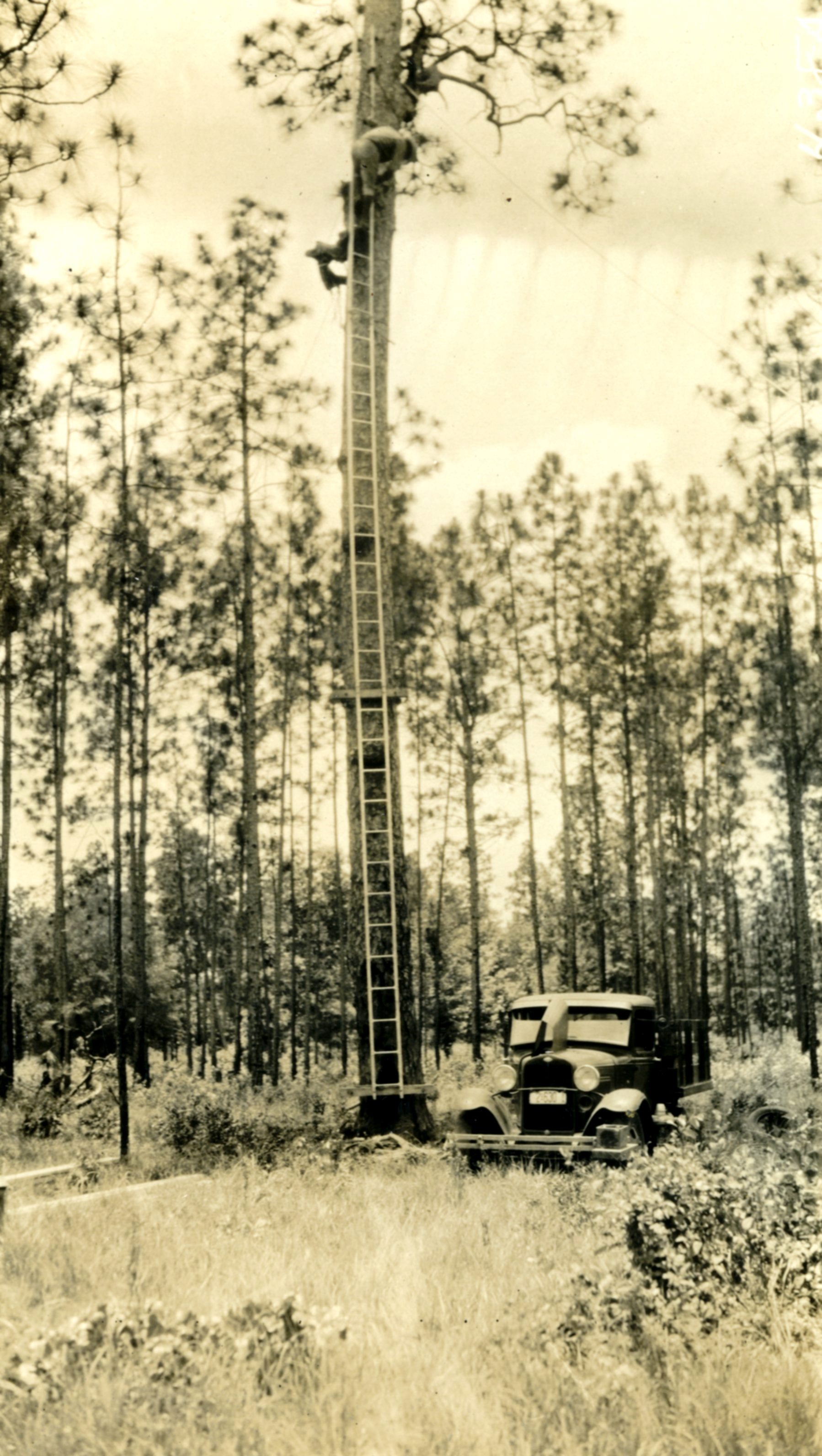
Other available vantage points, even the cupola atop the Hardin County Courthouse, served for a time as fire lookouts.
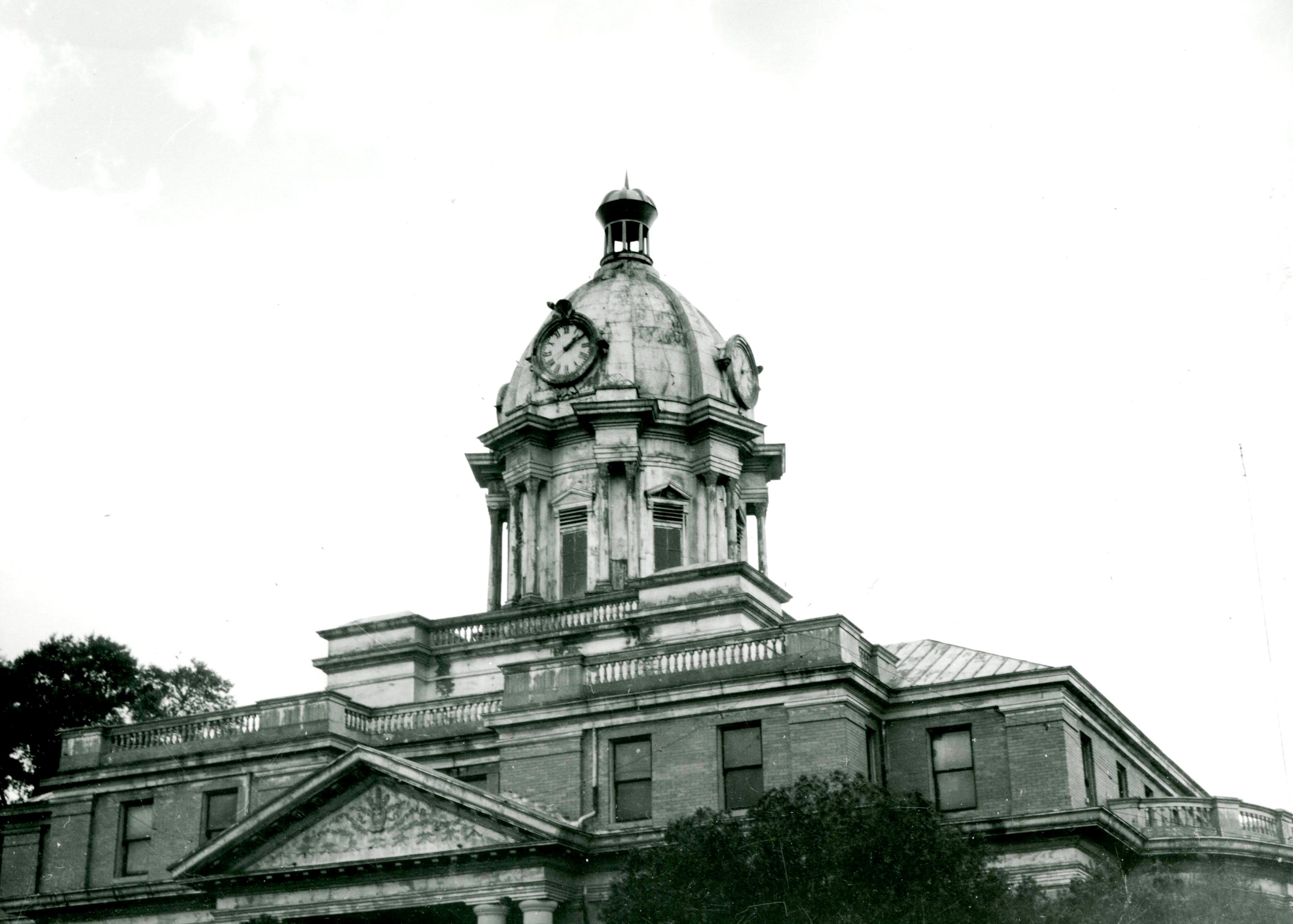
An observer or fire patrolman manned each fire lookout during seasons of high fire danger. The “lookoutman” was usually a local resident who lived near the fire tower. This was a challenging and low-paying position that required the provision of their own saddle horse or personal car for transportation to and from the lookout tower and his residence. He worked a minimum of 1,600 hours per year and usually more than nine hours per day, six days per week for about $50 per month. A typical day meant climbing up the tower each morning at daybreak, and remaining until a smoke was sighted or the sun went down. Some later steel towers boasted inclined steps to ease the climb while early towers required climbing hand-over-hand up ladders or tree spikes to reach the observation platform 80 to 100 feet above the ground. When a smoke was sighted, a bearing was taken from a nearby tower, marking the location on a map by triangulation. When available, a tower-mounted telephone was used to call the nearby smokechaser or patrolman who would respond to the fire. If no one answered the call, the lookoutman climbed down the tower, checked out the smoke, and tried to suppress the fire. Then, they climbed back up the tower to await another smoke.
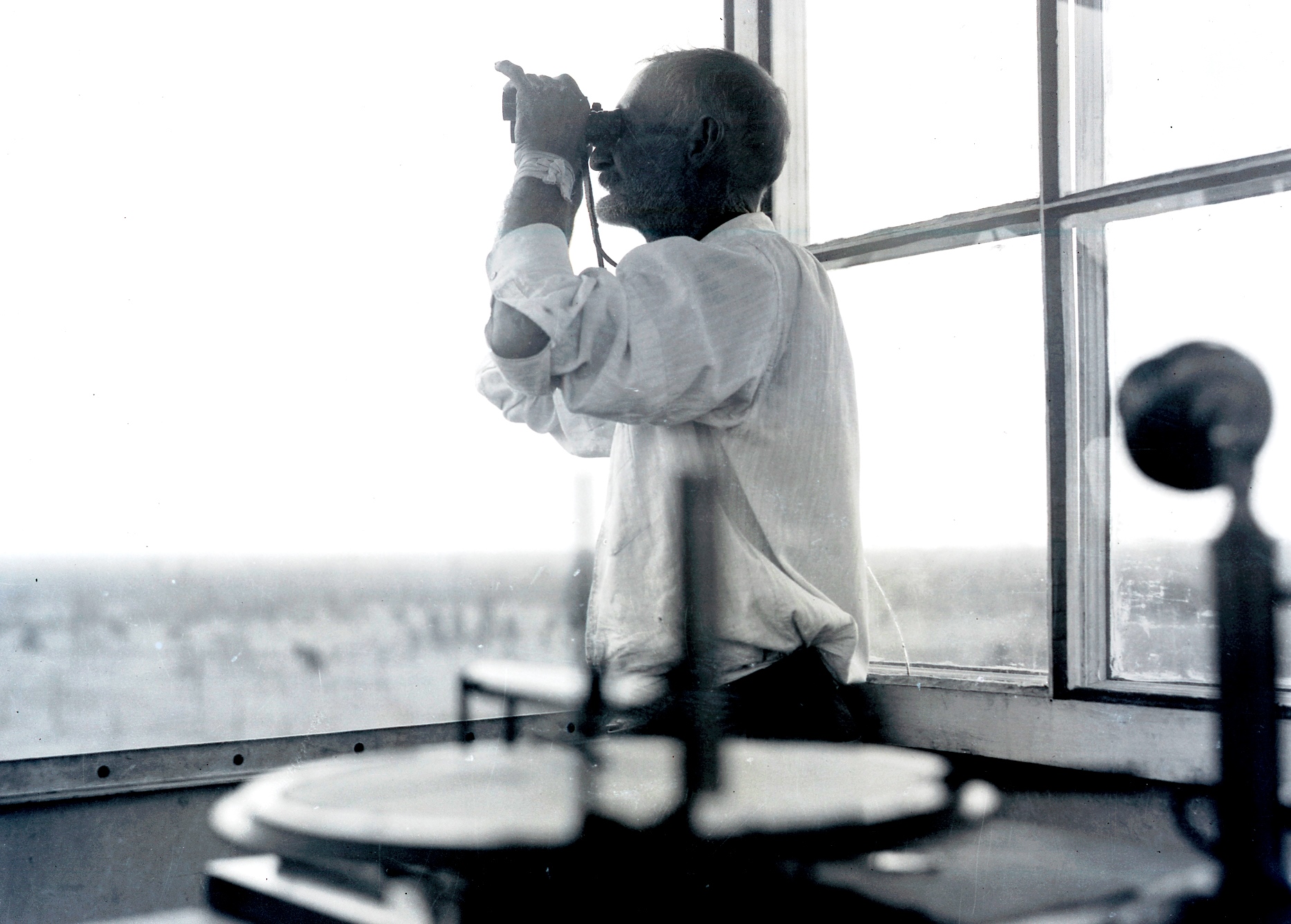
In addition to reporting wildfires, the lookoutman was responsible for maintenance of the tower, telephone lines, and nearby grounds. According to the job description at the time, maintenance on telephone lines consisted of “… repairing breaks, putting in new insulators and brackets, taking trees off the line, and grubbing the telephone right-of-way at least once per year thoroughly until same is no longer necessary.” On rainy days, the lookoutman visited schools, interviewed residents, posted fire prevention signs, distributed fire literature, or repaired roads within his protection unit. By 1932, the TFS Division of Forest Protection employed a field force of 167 men, consisting of 40 patrolmen, eight lookoutmen, 12 smokechasers, and 107 forest guards to protect some eight million acres. A forest guard was a local resident with an interest in fire prevention who was employed on an annual retainer basis and without pay to report and fight fires in his “neck of the woods.”
In 1926, the first permanent fire lookout tower in Texas—an 80-foot tall, steel structure—was erected at State Forest No. 1 (Siecke State Forest). Many other man-made fire towers throughout East Texas would follow. It cost about $200 to build a tree cab and $1,200 to build a steel fire tower. Only with the added funding and cooperation with the US Forest Service was this first tower erected.
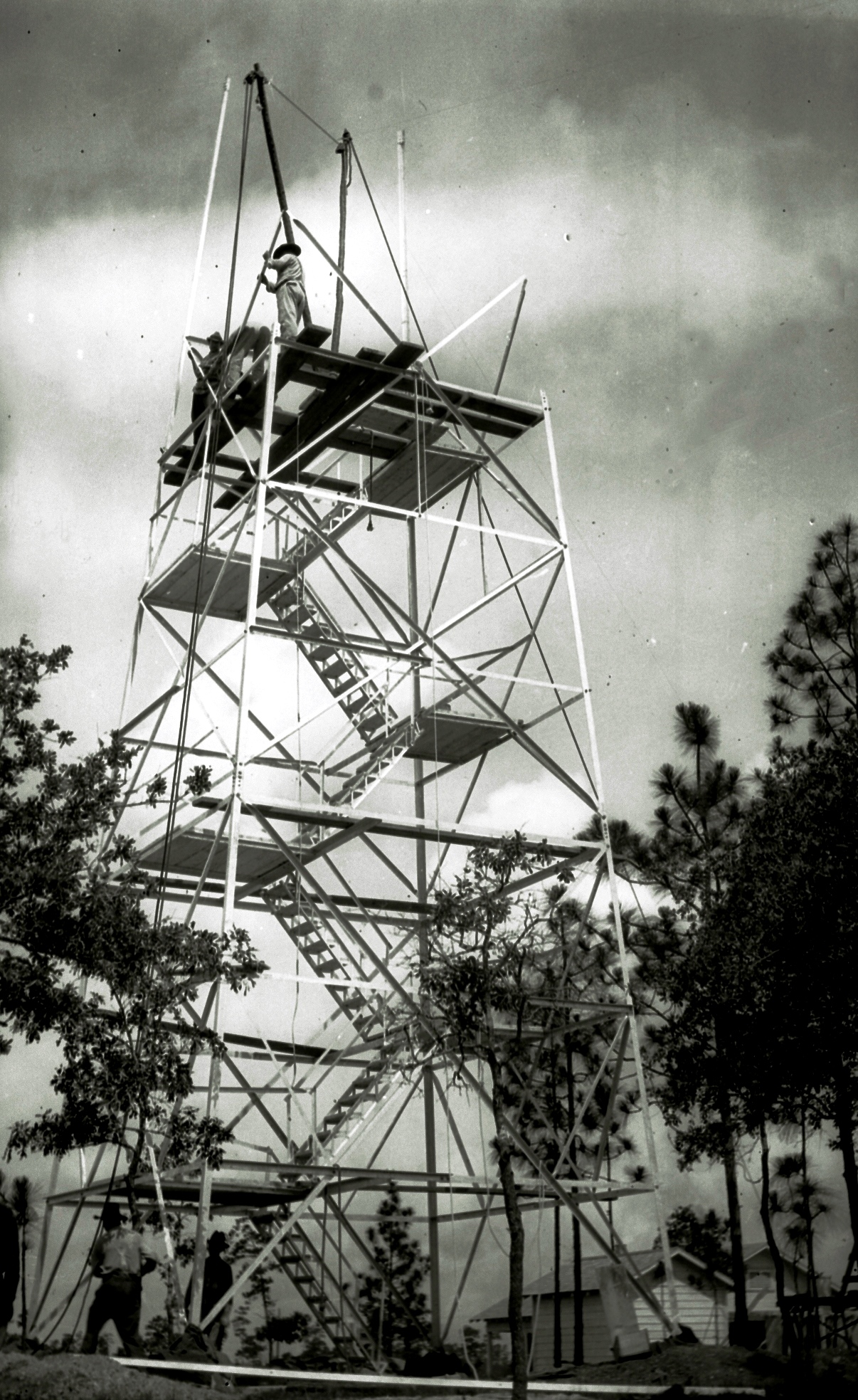
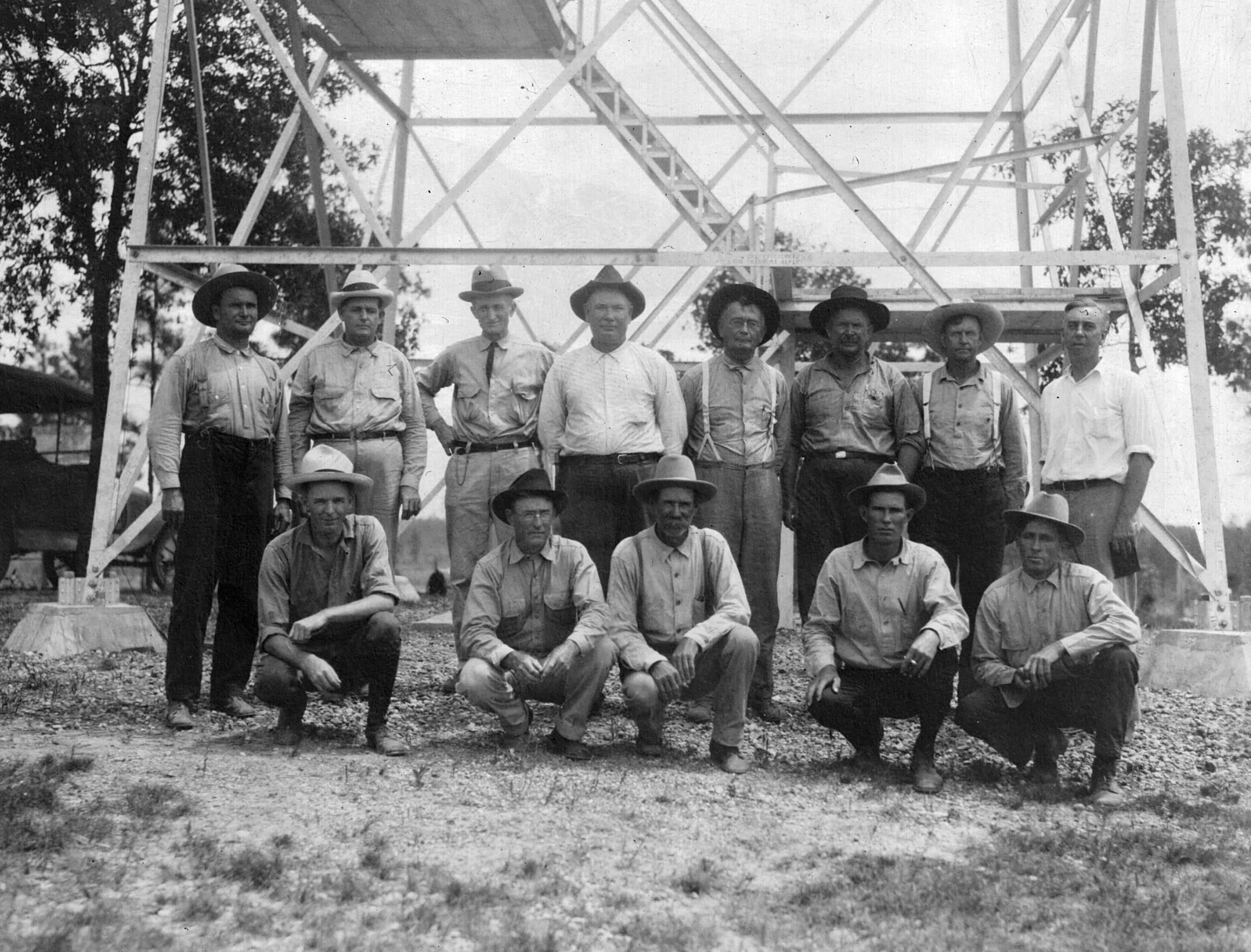
TFS telephone lines connected towers and tree cabs before the advent of radios in the 1940s. That system continued to grow up to the early 1970s. Three of the last eight towers erected in 1970 were situated in the Lost Pines Region.
With the persistence of L. D. Gilbert, general manager of the Southern Pine Lumber Company in Texarkana and a Texas Forestry Association member, the first protection unit was formed in 1927. Gilbert convinced his partners that contributing monetarily to the fire protection on their lands was beneficial to the company, the forest and the community. Income from his type of arrangement allowed for the construction of steel fire towers as part of the protection agreement between the company and the TFS. By 1928, the Houston County Timber Company and the Gilmer Company initiated cooperative protection agreements. This allowed for construction of three more steel towers and increased the area under protection, to over 398,000 acres. TFS used fire prevention funds allocated under the 1924 Clark–McNary Act to match fees from private landowners within the fire protection units. Fire protection fees on private lands were based on acreage protected. Nearly 3.4 million of the eight million forested acres protected by TFS would be under protection agreement by 1962, involving 140 cooperators.
During World War II, TFS, in cooperation with the Armed Forces, made all lookout towers and telephone communications available to detect enemy aircraft movement.
